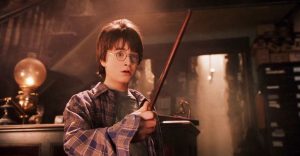Planes, Trains, And Automobiles: 13 Things That Still Hold Up Today

After making his name in teen comedies with hits like The Breakfast Club and Ferris Bueller’s Day Off, John Hughes stepped outside his wheelhouse for 1987’s Planes, Trains, and Automobiles. Hughes left high school behind for a cross between a road movie and a buddy film about reluctant traveling companions and their disastrous multi-vehicle journey to Chicago.
Thanks to timeless elements like Steve Martin and John Candy’s impeccable on-screen chemistry and relatable airline frustrations, Planes, Trains, and Automobiles is a hilarious gem that still holds up today.
Updated October 22, 2021 by Kayleena Pierce-Bohen: Planes, Trains, and Automobiles is a heartwarming and humorous movie that could easily be called the quintessential Thanksgiving movie. And with the holiday season rapidly approaching, this list has been expanded to include even more ageless aspects of this classic John Hughes flick.
Steve Martin And John Candy Share Hysterical Chemistry

The key to making a buddy movie work is finding actors who share impeccable on-screen chemistry as well as perfectly embodying their individual roles. And Steve Martin and John Candy made a comic pairing for the ages in Planes, Trains, and Automobiles.
Martin brilliantly captures Neal’s uptight nature and Candy’s spot-on portrayal of Del’s oblivious outgoingness offers a hysterical counterpoint to his character.
It Perfectly Captures The Frustrations Of Travel

From the moment Neal struggles to get a cab on the crowded street outside his office, Planes, Trains, and Automobiles perfectly captures the frustrations of travel.
Hughes confronts Neal and Del with every possible setback: delayed flights, crowded trains, inefficient car rental services, and buses with engine trouble. These problems are timelessly relatable. Everybody in the audience has dealt with these frustrations at some point or another.
Authentic Human Interactions

Not only are the two leads relatable characters, but they also interact with each other (and are part of interactions) in a way that comes across as authentic and genuine. Other characters around them use platitudes, swear, are uncouth, and come from a variety of economic backgrounds, from the service workers they interact with to their fellow passengers.
By Hughes allowing his actors to behave as humans do in real life, the movie rarely seems dated (except perhaps by fashion or technology), and on balance, the “warts and all” approach helps maintain its timelessness.
Little Details

The movie was shot all over Chicago, New York, and Los Angeles in the Spring of 1987, and despite a demanding schedule, Hughes insisted on shooting every aspect of his screenplay, which clocked in at incredibly abnormal 90 pages for a comedy. According to Wild and Crazy Guys: How the Comedy Mavericks of the ’80s Changed Hollywood Forever, Hughes wanted viewers to be able to watch the movie more than once, and catch something new every time they did.
Perhaps predicting its regular holiday rotation with audiences, he anticipated that their minds might wander, and so focused on seemingly random details to include (such as the man holding a shoebox full of squirming white mice, or Del reading a trashy romance novel hilariously called “The Canadian Mounted”) so that even the background shots were filled with eye-catching components.
The Plot Moves At A Nice, Brisk Pace

According to Kirk Honeycutt’s John Hughes: A Life in Film, Hughes wrote the script for Planes, Trains, and Automobiles in just three days – the same amount of time it takes Neal and Del to get to Chicago. This process could be described as rushed, but Hughes’ hugely influential writing speaks for itself.
The expedited schedule of Hughes’ screenwriting meant he didn’t overthink anything and focused on driving the plot forward. Planes, Trains, and Automobiles exemplifies the strengths of Hughes’ no-nonsense writing. The movie never stays on a scene for too long and there are always more hilarious hijinks on the horizon.
It Has The Perfect Balance Of Heart And Humor

There are plenty of absurd situations in Planes, Trains, and Automobiles, from a discarded cigarette exploding a car to the torched car crashing through the wall of a motel, but the absurdity is never at the expense of drama. The movie has a perfect balance of heart and humor.
It’s arguably the most emotionally engaging movie from Hughes’ filmography. The treacly sentimentality isn’t for everybody, but the heartfelt dramatic moments land beautifully.
The Characters Are Three-Dimensional

Most buddy movies like this have one-note archetypes in the lead roles. Hughes used archetypes as a jumping-off point for both Neal and Del – the former being a high-strung corporate suit and the latter being a friendly optimist oblivious to the problems he causes – but he rounds them out as three-dimensional human beings.
Neal’s desperate bid to get home to his family makes him relatable, while Del’s “You wanna hurt me?” monologue gives the character real depth.
Martin And Candy Both Showed Off Previously Unseen Dramatic Range

There was no question of Steve Martin or John Candy’s comedic talents prior to Planes, Trains, and Automobiles. Both have been hailed as comedy legends since the beginning of their career.
But in Planes, Trains, and Automobiles, the two actors showed off their previously unseen dramatic range, particularly in Neal and Del’s home-truth-spilling arguments and the twist reveal about Del’s wife.
It’s The Ultimate Thanksgiving Movie

There aren’t a lot of movies about Thanksgiving – the holiday doesn’t have its own subgenre like Christmas – so there’s no question that Planes, Trains, and Automobiles is the perfect Thanksgiving movie. But even if there were a bunch of other well-known Thanksgiving movies, that would probably still be the case.
Planes, Trains, and Automobiles isn’t just the quintessential Thanksgiving movie because it revolves around Neal’s quest to get home in time to celebrate the holiday; Hughes’ film embodies what Thanksgiving is all about. Neal warming to Del and eventually inviting him over for dinner is the ultimate Thanksgiving story.
The Wholesome Message

At its heart, Planes, Trains and Automobiles is about the inherent danger of judging a book by its cover — of judging people based on a moment in time. But because of the circumstances they find themselves in, Neal and Del are forced to get to know one another despite how little they have in common, and the movie preaches a message of tolerance and empathy.
Neal is self-centered and inwardly focused, who purports to care about his family but doesn’t have time for them. He’s concerned about his trip, his comfort, his luggage, and his own problems until he meets Del, who’s so concerned about everyone else around him that he forgets to take stock of his needs. One isn’t open enough, and the other is too open, but because of the forced self-reflection they undergo, the two men find they have more in common than they think.
Neal’s Car Rental Meltdown Never Gets Old

Neal’s outburst at the car rental place in Planes, Trains, and Automobiles is one of the funniest movie moments of all time. Everybody’s been there – at their wits’ end, scorned by bad customer service – and Martin’s exasperated delivery of Neal’s profane monologue will never get old.
Modern R-rated comedies have F-bombs peppered through every single scene, but Hughes gives his one profanity-laden scene hilarious effect by keeping the other scenes relatively clean. The car rental agent, played by Ferris Bueller’s Edie McClurg, gives the scene a perfect punchline: “You’re f*cked!”
It Was A Radical Change Of Pace For John Hughes

Throughout the ‘80s, John Hughes became a famous filmmaker with a series of hit high school comedies. Just when he was starting to settle into a familiar teen movie formula, Hughes branched out into new territory for Planes, Trains, and Automobiles.
For his first non-high school movie, Hughes blended two other comedy subgenres: the road movie and the buddy movie. Planes, Trains, and Automobiles proved that Hughes wasn’t a one-trick pony.
The Heartbreaking Final Twist Makes The Movie Rewatchable

Del’s arc takes a heartbreaking turn at the end of Planes, Trains, and Automobiles. After parting ways with Del, Neal pieces together that Del doesn’t have a home to go to. So, he returns to the train station and invites Del over to his own house for Thanksgiving.
Knowing that Del’s wife has passed away adds a tragic layer to his character arc on rewatches. It’s easier to pick up on the foreshadowing when the audience knows there’s something to foreshadow.
About The Author


















